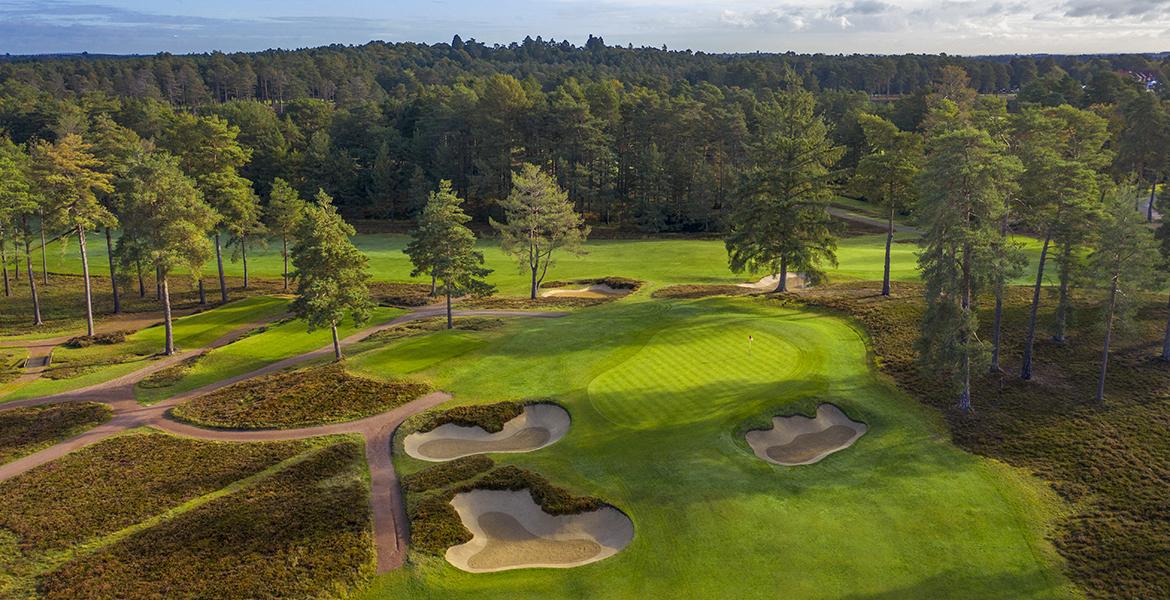True, Cancun’s year-round tourism economy also depends on conventions, cruise ships and middle-class Disney families, but it has happily (if unofficially) allowed itself to be known as a besotted weeklong party for American college students. Throw in honeymooners and the eco-adventure crowd, and you have a tourism juggernaut, with more than 51,000 hotel rooms from Cancun to the Mayan ruins of Tulum—a 75-mile coastline called the “Riviera Maya”—attracting an astounding 38 percent of Mexico’s international tourists.
Yet somehow, they did it all without any I-must-go-before-I-die golf. Nobody ever confused Cancun for Cabo.
But now that’s all changing with the speed of a Caribbean storm.
The Riviera Maya boasts six quality courses, notably a $20 million Greg Norman creation, El Camaleon, that will host Mexico’s first official PGA Tour event in February, and in the next two years another six to 10 name-designer joints are supposed to open or break ground.
In most cases, the courses will be the jeweled centerpieces of sprawling multihotel resorts owned by Spanish, Canadian, Asian and U.S. firms that are cutting down the Yucatan’s mangrove jungle so quickly that it all resembles the remaking of south Florida.
In fact, the two regions hold a lot of similarities. They’re both flat and humid, and if the ocean breeze isn’t blowing, a bit buggy. Like much of south Florida, the Yucatan is really a slab of limestone laced with caves and sinkholes, some of which make fascinating features on the better golf courses. Culturally, Cancun, like Miami, can be both charming and oppressively tacky, but you can still head down the coast and immerse yourself in small fishing villages or head inland to the incomparable Mayan ruins of Chichen Itza and Uxmal.
The other similarity—hurricanes—has gotten a bit too much press lately. On the afternoon of October 20, 2005, Doug Goubault, general manager of El Camaleon, stared into the dark churning water off the coast and wondered how he would survive Hurricane Wilma, once gauged at 175 m.p.h., the strongest hurricane ever recorded in the Atlantic.
“We boarded up all the windows and I sent my wife to Acapulco,” says Goubault, whose invigorating course is 30 miles south of Cancun at Fairmont’s Mayakoba resort, which opened in June.
“I knew how bad it would be when I saw the ocean surge over those dunes.” Goubault continues, waving a 5-iron at a tranquil but depleted beachfront. The local economy lost an estimated $800 million and thousands of hotel workers lost their homes and jobs for months.
But like many Cancun properties that remodeled and reinvented themselves after Wilma, El Camaleon found a silver lining in the hurricane’s destruction. On the dreamy par-3 15th, the obliteration of those sugar-white dunes opened up a full view of the turquoise Caribbean that previously had been obscured. The enticing palm-lined hole is now arguably El Camaleon’s most memorable hole.
Norman’s first design in Mexico, El Camaleon is the Yucatan’s most impressive course, for now. At 7,067 yards and usually windy, it has immediate brain-imprinting holes, ample fairways, harmless rough and easily moves from mangrove forest to jungle to beachfront—hence the name, chameleon.
El Camaleon’s clubhouse lures you with striking Mexican art, golden onyx walls, a gentle outside waterfall and, on the top floor, an Argentinean steak house. But here’s the sizzle: The lush, salt-tolerant paspalum fairways are surrounded by six miles of high-walled lagoons dynamited from the ancient limestone Mayans used for their temples. Seven years of work. A half million cubic yards of debris.
As planned, the lagoons naturally filled with clear subterranean water, which Mayakoba guests navigate (no swimming please) by lanchitas, or electric-powered boats. The canals are also attracting turtles, great egrets, cormorants and crocodiles. But Goubault, a Canadian wit, assures us that were a hotel guest actually eaten by a crocodile, his party would be allowed a late checkout.
More golf along the coast
Just 15 minutes north of Mayakoba is a daring and rambunctious P.B. Dye creation at the Iberostar resort called Playa Paraiso Golf Club, which utterly defies ambivalence and should not be missed.
You will either love playing from 18-foot-deep, 60-foot-wide, grassed fairway “craters” or you won’t. You’ll delight in the 13,000-square-foot, three-tiered, oceanic, No. 7 green, the palm-in-a-bunker fronting the 5th green, and the 170-yard lava flow of limestone down the middle of No. 9 fairway—or you’ll think Mr. Paul Burke Dye, a.k.a. Señor Undulation, is a loon. But you’ll certainly remember your day. (Bring a 60-degree wedge.)
Playa Paraiso, surrounded by the resort’s tropical pinks, purples and reds, can be so gnarly from the tips that the director of golf, Greg Bond, deliberately omitted the yardage from the scorecard. “The back tees play at just under 6,800 yards at a Slope of 136,” Bond confesses with a chuckle, “but we really don’t want the 15-handicapper to know that. It will chew you up and spit you out.” A million-dollar maintenance budget with a 42-man crew keeps Playa Paraiso nearly flawless.
Another Greg Norman project, Playa Mujeres, three miles north of Cancun, opened in June and is part of a $1.5 billion development that boasts a marina, four-mile beach and a 1,200-year-old Mayan ruin—all private.
Two other enjoyable Florida-style courses are the Playacar Spa & Golf Club, a 1994 Robert von Hagge design in touristy Playa del Carmen, an hour south of Cancun, and a big, wide, 27-hole Nicklaus resort track at Moon Palace Spa & Golf Club that beckons the club-renting tourist.
From the appropriately colored black and blue tees, bruising Playacar plays at 7,144 and 6,639 yards, with humbling Slope ratings of 148 and 142. The dense jungle thicket is seemingly just a clublength from the cart path all day long, almost as close as you can get to the three-foot iguanas sunning on the rocks. The general manager, Fernando Sandoval, and sweet-swinging, course-record-holding (68) head pro, Adan “Niño” Alvarez, oversee a friendly, bilingual staff.
Moon Palace offers three benign nines (Lakes, Jungle and Dunes) that are buffed and trimmed like Westminster poodles. The Nicklaus Design Group has two other properties nearby: the excellent Cozumel Country Club and the Mayan Palace Golf Course, a creative 18-hole par-3 layout with holes from 103 to 276 yards.
Alas, be wary of the Cancun Golf Club at Pok-Ta-Pok, a 1976 Robert Trent Jones Jr. layout in the heart of Cancun’s hotel district. Fabulously sited between the Nichupte Lagoon and the Caribbean, Pok-Ta-Pok has weathered two hurricanes and years of neglect, and is now consumed by crabgrass—a West Texas muni at best. “It’s an embarrassment to us all,” says Playa Paraiso’s Bond, formerly Cancun’s general manager. He estimates that a complete renovation would cost at least $7 million.
Jones, who has designed more than 200 courses in 38 countries, tells LINKS that he has offered to “thoroughly refresh, restore and, if necessary, redesign, Pok-Ta-Pok for expenses only,” and that the new owners seemed responsive. “I’ve not seen the course in 25 years,” says Jones, “but like the City of Chicago’s famous Picasso sculpture, if they were to sell bits and pieces of it for scrap iron it would no longer be a Picasso. I don’t think that course can still be called a Robert Trent Jones Jr. course.”
Even so, the lineup of courses in the Riviera Maya will keep visiting golfers busy for a week, but here’s what’s coming in the next two years: Puerto Cancun, a Tom Weiskopf course next to Cancun’s hotel strip; Cancun Riviera, a Palace Resorts project; and TPC Cancun, with two 18-hole courses designed by Tom Fazio and Nick Price. And another half-dozen are reportedly in various stages of planning and permitting.
Which means the Riviera Maya is making a strong push at surpassing Cabo as a golf destination, a prospect the locals feel bullish about. Even if it doesn’t happen, the area’s current transformation from spring break mecca to golf destination is impressive enough.






